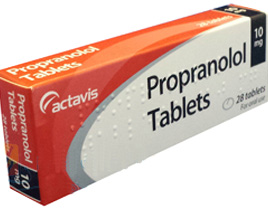Overview of Propranolol
Propranolol, a stalwart among medications in the beta-blocker class, is highly regarded for its versatility and effectiveness in managing an array of medical conditions. One of its primary roles is in cardiovascular health, where it plays a crucial part in controlling hypertension, angina, arrhythmias, and post-myocardial infarction care. By blocking beta-adrenergic receptors in the heart and blood vessels, propranolol helps reduce heart rate and blood pressure, alleviating the strain on the cardiovascular system.
Beyond its cardiovascular benefits, propranolol extends its therapeutic reach to encompass various neurological and psychiatric disorders. In the realm of mental health, it is a valuable tool in managing anxiety disorders. By modulating the body’s response to stress hormones like adrenaline, propranolol can mitigate the physical symptoms of anxiety, such as rapid heartbeat, trembling, and sweating, providing relief to individuals grappling with these conditions.
Propranolol’s influence also extends to neurological conditions, particularly in the realm of movement disorders. Essential tremor, characterized by involuntary shaking of the hands, head, or voice, is effectively managed with propranolol. Its ability to stabilize tremors stems from its action on the cerebellum, where it helps regulate the rhythmic firing of neurons responsible for tremor generation.
Moreover, propranolol has found a niche in the realm of headache management, particularly in migraine prophylaxis. By modulating neurotransmitters involved in migraine pathophysiology, propranolol can reduce the frequency and severity of migraine attacks, offering respite to individuals plagued by these debilitating headaches.
In the context of endocrine health, propranolol is sometimes employed to address certain symptoms of hyperthyroidism, such as palpitations, tremors, and anxiety, by counteracting the effects of excess thyroid hormones on the body’s adrenergic receptors.
Mechanism of Action
As a non-selective beta-blocker, propranolol works by blocking the effects of adrenaline (epinephrine) and noradrenaline (norepinephrine) on beta receptors in the heart and blood vessels. By doing so, it reduces the heart rate, blood pressure, and the workload on the heart, thereby alleviating symptoms associated with cardiovascular conditions and anxiety.
Indications and Usage
Propranolol is indicated for the treatment of hypertension (high blood pressure) and angina pectoris (chest pain). It is also prescribed for the prevention of migraine headaches, management of essential tremor, and as an adjunct in the treatment of certain types of arrhythmias. In anxiety disorders, propranolol is often used to control symptoms such as palpitations, trembling, and sweating.
Dosage and Administration
The dosage of propranolol varies depending on the condition being treated, the patient’s age, and other individual factors. It is available in various formulations, including tablets, capsules, and oral solutions. The following dosage table provides a general guideline for the starting doses of propranolol for different indications:
| Indication | Initial Dose | Maintenance Dose |
|---|---|---|
| Hypertension | 40 mg twice daily | 120-240 mg daily |
| Angina | 40-80 mg twice daily | 120-240 mg daily |
| Migraine prophylaxis | 80 mg daily | 80-240 mg daily |
| Essential tremor | 40 mg twice daily | 120-320 mg daily |
| Anxiety disorders | 10-40 mg three times daily | Up to 200 mg daily |
It is important to follow the dosage instructions provided by a healthcare professional and to not exceed the recommended dose without medical guidance. Propranolol is usually taken with food to minimize gastrointestinal side effects.
Contraindications and Precautions
Propranolol is contraindicated in individuals with certain cardiac conditions such as bradycardia (slow heart rate), heart block, or cardiogenic shock. Caution is advised in patients with asthma, chronic obstructive pulmonary disease (COPD), diabetes, and those taking other medications that may interact with propranolol. Abrupt discontinuation of propranolol should be avoided, as it may lead to rebound hypertension or worsening of angina.
Adverse Effects
Common side effects of propranolol include fatigue, dizziness, nausea, diarrhea, and cold extremities. It may also cause sleep disturbances, vivid dreams, and sexual dysfunction. Serious side effects such as bradycardia, heart failure, and bronchospasm are rare but require immediate medical attention if experienced.
Drug Interactions
Propranolol may interact with other medications, including other beta-blockers, calcium channel blockers, and medications that affect liver enzyme function. It is important to inform healthcare providers about all medications, supplements, and herbal products being taken to avoid potential interactions.
Pregnancy and Lactation
Propranolol is generally not recommended during pregnancy unless the benefits outweigh the risks. It may be excreted in breast milk, so caution is advised when used by breastfeeding mothers.
Storage and Handling
Propranolol should be stored at room temperature away from moisture and heat. It should be kept out of reach of children and disposed of properly when no longer needed. When handling propranolol tablets or capsules, clean hands should be used, and the medication should not be crushed or chewed unless directed by a healthcare provider.

Julian (verified owner) –
Product quality is excellent. Delivery took longer this time.